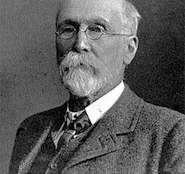BEN TURLEY reports on the implications of a House of Lords’ ruling in the school uniform court case
In my article, ‘Beggars Belief’, in the last edition of Democratic Socialist, I reported on the Court of Appeal case of Begum v Denbridge High School.
The court decided that the school had infringed the right of Ms Begum to wear a jilbab, which is advocated by very strict Muslims to hide the shape and form of adult women. The school had sent her home from school and refused to accept her back unless she adopted the much less strict uniform it had agreed with Muslim parents and the local mosques. The court concluded that the school could not justify this infringement of the child’s right to religious freedom because it had not followed a correct procedure. Laying down a procedure, the court proposed a long and complex series of steps which overtly related to human rights law.
Reviewing that judgement, I commented: ‘When making its decision to exclude the claimant, I suspect the school did not expressly consider its justification for limiting the claimant’s human rights because it considered that to be too controversial for the headteacher and the board of governors. Instead, it decided to restrict itself to whether or not school rules had been infringed and whether those rules were consistent with the school’s policy on multiculturalism.’
It appears that the House of Lords has taken a similar view when considering an appeal from the Court of Appeal. In fact, the view that they took is very robust indeed. By a margin of 3:2 they decided that there had been no infringement of Ms Begum’s right to religious freedom and they were unanimous in concluding that even if there had been, that infringement would have been justified.
Lord Bingham of Cornhill described the Court of Appeal’s decision as: ‘admirable guidance to a lower court or legal tribunal, but [it] cannot be required of a head teacher and governors, even with a solicitor to help them’.
Lord Hoffman was even more incisive when he commented that: ‘common civility also has a place in the religious life … [Ms Begum and her brothers] sought a confrontation and claimed that she had a right to attend the school of her own choosing in the clothes she chose to wear’.
A pawn in their game
Furthermore, Lord Scott observed that: ‘the confrontational nature of the peremptory manner in which the jilbab issue was raised with the school, a manner which is very unlikely to have been chosen by Shabina [Ms Begum], not yet 14 years of age, set the tone for how the issue then developed’.
The clear implication of these comments in their context is that it was Ms Begum’s brothers who were the main players and Ms Begum was only a pawn in their game. The key principle in this important judgement is that: ‘Freedom to manifest one’s religion does not mean that one has the right to manifest one’s religion at any time and in any place and in any manner that accords with one’s belief.’
Ms Begum could have attended two other schools where she could have worn the jilbab. The school actively sought her return or her transfer to another school to maintain her education. It was the claimant’s inflexibility, presumably under pressure from her brothers, which prevented her from agreeing to a transfer early on in the dispute. She was free, in other words, to wear the jilbab, but not to do so at that school, which had properly consulted on its school uniform with religious authorities and the community.
Even if that had not been the case, and changing schools was more disruptive and difficult than the majority accepted, as Lord Nicholls of Birkenhead and Baroness Hale of Richmond contended, then the school’s decision could be justified on the grounds that the school’s uniform policy was ‘a thoughtful and proportionate response to reconciling the complexities of the situation’. This included the fear of the majority of Muslim families that allowing the jilbab would lead to harassment towards those whose interpretation of religious tradition was less severe.
It should be noted that the position arrived at by the House of Lords is a long way away from the French attitude towards religious dress in schools. It leaves the decision up to the school after proper consultation with the community and religious authorities. If the decision falls within the possible scope of what is lawful under the Human Rights Act 1998, the state, in the form of the courts, will not interfere with a decision made by the governing body of a school. This is the polar opposite to the French position which is based on a law that emanates from the nation’s constitution and which lays down one absolute standard for everyone.


